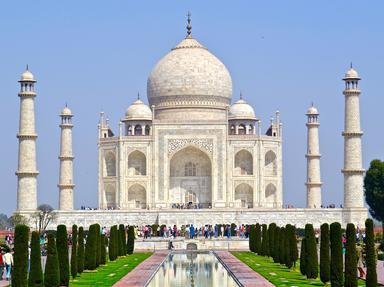Quiz Answer Key and Fun Facts
1. Our first stop is the Taj Mahal, the monument of love built by Shah Jahan for his wife, Mumtaz. Lesser known is that the Taj was inspired by the tomb of Mirza Ghiyas Beg. How is he related to Mumtaz?
2. Rani ki vav is a UNESCO World Heritage site found in the small town of Patan in Gujarat. What kind of structure is it?
3. The Kaziranga National Park, home to the Indian rhinoceros, is found in which state?
4. Khardung La is the highest motorable pass in India and is strategically important as it is used to carry supplies to the Siachen Glacier, the world's highest battleground. Which neighbouring country has India had conflicts with here?
5. The southern state of Kerala is famous for its backwaters. What kind of boats would you expect to see during a traditional boat race?
6. Nalanda is famous for its Buddhist ruins but which of these is another claim to fame of this region?
7. Hazratbal is considered to be Kashmir's holiest Muslim shrine. Which of these does it hold according to the locals?
8. Present day tourists visit Golconda to marvel at the fort but which iconic gemstone was originally mined in this region?
9. In which part of India would you find living root bridges?
10. One of Lucknow's best known attractions is the Bara Imambara. Which of these would you find here?
Source: Author
zorba_scank
This quiz was reviewed by FunTrivia editor
agony before going online.
Any errors found in FunTrivia content are routinely corrected through our feedback system.
